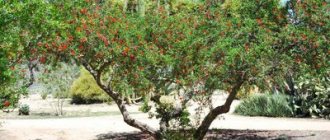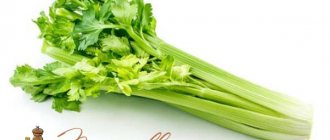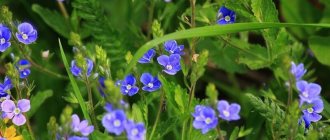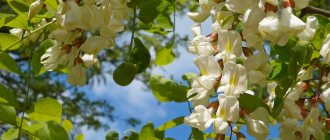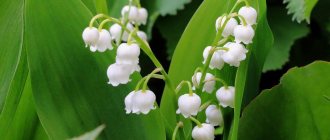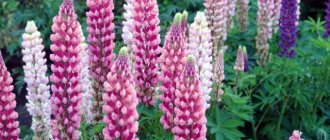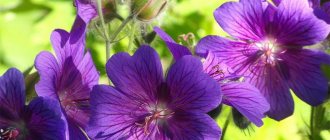It should be noted that there are fragrant varieties of geranium and pelargonium. The difference for the buyer, first of all, is that geraniums are predominantly open-ground garden plants, while pelargoniums are almost always grown indoors. Otherwise, these are plants belonging to the same family Geranium, and ordinary people often confuse them with each other, calling pelargonium geranium, and vice versa. Within the framework of this material, all varieties of indoor flowers that are conventionally included in the group of fragrant geraniums will be considered.
Fragrant geranium - what is it?
According to the botanical classification, geranium (lat. Geranium) is a herbaceous perennial plant that prefers dry soils, sometimes winter-hardy. The leaves are palmate or palmately lobed, on long petioles, always with pubescence.
scented geranium
The color of the flowers, consisting of five petals rounded at the ends, can be white, pink, purple, blue. The bushes are branched with shoots directed upward or creeping.
Geranium leaf
Fragrant pelargonium (lat. Pelargonium odorata) is an independent representative of the Geranium family with a different chromosome set than the classic geranium. These plants form bushes from erect shoots or drooping (ampeloid). The leaves are pubescent (zonal varieties), as well as smooth, fleshy and shiny (ivy-leaved varieties).
Flowers come in all kinds - five-petalled, semi-double, double, resembling roses (rosebundae). The color of the petals is almost any, single-color, two-color, multi-color, but never blue or purple.
Leaves of ivy-leaved variegated pelargonium (Edinburgh variety)
Description and characteristics of appearance
Geranium fragrant is a trade name. On the price tags you can see the words: colon, perfume, most fragrant. Plants in this group may actually belong to pelargoniums or geraniums, but they are always distinguished by their inexpressive flowering and the bright, memorable aroma that the foliage produces, just by touching it.
Fragrant geraniums look different. Their foliage can be monochromatic - light or dark green, with a characteristic spot in the middle of the rounded leaf plate (zonal pelargoniums), but the most spectacular are varieties with openwork pinnately dissected foliage and variegated ones, combining several shades at once (yellow, green, pink, purple, etc.). d.).
Fragrant pelargonium variety Lady Plymouth
History of origin or selection
There are a great many varieties of geraniums (over 400 species). They are found in nature almost all over the globe.
For example, in Greece the species Pelargonium graveolens (geranium graveolens) grows, which served as the ancestor for the varieties:
- Gray Lady Plymouth,
- Cinnamon Rose,
- Graveolens and others.
The variety with curling leaves is known as Pelargonium graveolens cv "Bontrosai".
All this serves as extensive genetic material for breeders, who regularly present the latest developments.
For reference! Modern fragrant varieties are distinguished by their unpretentiousness, compact crown, pleasant aromas and useful ability to improve the health of the air in the house, repel flies and mosquitoes.
The non-capricious culture is suitable for novice gardeners, but in addition to the benefits, there are contraindications for allergy sufferers.
Correct fit
To replant pelargonium, you need to select a flower pot that matches the size of the plant’s root system. It should be only a couple of centimeters wider than the previous one.
In a spacious pot, geranium will develop poorly and there will be a risk of waterlogging. Possible root rot.
To prevent moisture from stagnating, a layer of expanded clay is placed on the bottom. After replanting, water well to shrink the soil mixture.
Fragrant pelargonium differs from other types of geraniums in that it does not like acidic soil. Peat is contraindicated for her.
Properly selected soil composition will ensure good plant development and abundant flowering.
What is the difference from fragrant pelargonium
Considering the colossal variety of varieties and their similarities, a non-specialist can distinguish geranium from pelargonium only by indirect signs, because there are still characteristic differences.
Types of geranium - what happens, popular varieties
Pelargoniums do not come with flowers in purple and blue shades. Geraniums have flowers with only 5 petals; in addition, there are varieties without flowers at all (non-flowering).
Geranium does not form an ampel; its shoots tend to always stretch upward. Pelargonium is ivy-leaved without a pubescence on the leaves, with double flowers and drooping long branching shoots.
Attention! It is impossible to cross pelargonium and geranium at home.
Culinary use
The leaves and flowers of pelargonium are commonly used in cooking. They can be used for herbal teas or to flavor desserts such as cakes and jellies. The most commonly used varieties of geranium are those that have the scents of rose, lemon and mint. The chopped leaves can be placed in ice cube trays and used for iced tea or other cold drinks. The wonderful scent of Pelargonium 'Candy Dancer' is a great addition to many recipes anyway.
Geranium and fragrant pelargonium: varieties and varieties
Several hundred varieties of fragrant geraniums can be found freely available in specialized nurseries and in amateur collections. Based on the direction of aromas, the following variety series are distinguished.
Pelargonium lemon
Geranium at home - where is it better to place it in an apartment, in a flower pot or on a windowsill?
This name was given to a variety of fragrant pelargonium, represented by various varieties, for example, Pelargonium x species Grandeur Odorata Perfum, Mabel Gray.
It is characterized by a tall (35-70 cm) crown with large heart-shaped, strongly dissected, slightly fleecy, bright green, lemon-fluffed leaves with pointed tips. This is what lemon balm or lemon balm smells like.
Lemon-scented geranium blooms reluctantly in racemose inflorescences consisting of 3-15 buds, blooming in the form of 5-petalled corollas of a light pink hue with purple spots on two petals and a large pistil of the same hue.
For reference! It lends itself well to shaping by pruning; in general, caring for lemon geraniums is very simple.
Lemon geranium
Pelargonium Candy Dancer
Fragrant pelargonium with a light sweetish pleasant aroma, reminiscent of a mixture of lemon and rose. The variety was bred in 2002.
The very delicate light green foliage is somewhat reminiscent of a hogweed leaf. The leaves are covered with stiff, whitish bristles that emit a strong odor when touched. This geranium with carved leaves has 5-petalled light pink or lilac flowers.
Fragrant pelargonium Candy Dancer
Pelargonium "Chocolate"
So far, breeders have not been able to obtain pelargonium with the exact aroma of chocolate, but work in this direction is underway.
To a first approximation, chocolate notes combined with mint are found in the leaves of the Chocolate Peppermint variety. The foliage of this pelargonium is slightly reminiscent of maple in shape and has a large brown-burgundy spot in the center.
Pelargonium Chocolate Peppermint
Pelargonium Ardwick Cinnamon
The species hybrid obtained from Pelargonium fragrans has a pleasant aroma of wormwood with notes of cinnamon.
The leaves are typical of royal pelargoniums, harsh, light green, corrugated at the edges, with velvety pile, giving the crown a bluish touch.
Variety Ardwick Cinnamon
Pelargonium Charity
The leaves of this pelargonium have a lemon-resinous aroma. Their color is variegated - it combines sectors of light and dark green.
It blooms in small racemes of pink 5-petalled flowers. The crown is extended upward. Remains compact with regular pruning.
Varietal pelargonium Charity
Pelargonium Gemstone
A bush with smooth, erect shoots up to 60 cm high. Lobed, rough leaves emit a subtle lemon aroma.
Flowering, unlike other fragrant varieties, is long-lasting, the flowers are larger than usual and colored in a bright pink-red hue.
Geranium Gourmet "Gourmet"
The Gourmet variety series is a fragrant geranium with a variety of scents: lemon, cinnamon, apple, Coca-Cola, orange, pine, rose.
Tall plants up to 60 cm high have large, heavily dissected, green foliage of a single or variegated color, and various shades of flowers - a mix from soft pink to deep burgundy.
Short description
Fragrant geranium is an unpretentious, quite popular garden and indoor plant with a specific smell. The plant is a branched bush with a well-developed nodal rhizome. The leaves are carved, palmate-lobed in shape. Covered with fibers that, when touched, emit an intense aroma. The flowers are collected in umbels, small, inconspicuous, white and pink in color. It is the ability to spread an unusual strong smell that is the hallmark and main value of fragrant geranium. In addition, its easy care and exceptional healing properties attract the attention of housewives and gardeners.
Home care for scented geraniums
According to the owners of fragrant geraniums, they are less capricious in care than pelargoniums, which are considered one of the most unpretentious indoor flowers. It is enough to pay attention to the bush once a week to inhale its pleasant aroma for many years.
Illumination and temperature conditions
Pelargonium Tuscany and its varieties Edwards, Bernd and others
Like all representatives of the Geranium family, fragrant pelargoniums are very fond of sunlight. On southern windows their crown will be thicker and brighter, and in the shade it will darken and stretch out.
Attention! If there is too little sun, flowers will not appear even in summer.
The optimal temperature in summer is +18..+24 °C. In winter, you can lower the air temperature to +15 °C, this is especially good when there is a lack of light.
Watering rules and humidity
It is necessary to water only when the soil in the pot dries 3-4 cm deep. The watering regime is selected depending on the time of year.
- In the heat of summer, when geranium is actively growing and blooming, it sometimes requires daily watering.
- In winter, when the plant is almost dormant, the roots absorb moisture slowly; it is worth watering a couple of times a month.
Permissible air humidity is within 40-80%; foliage spraying is not required even in hot weather.
Fertilizing and soil quality
Unsuitable soils for geraniums: heavy loam, oversaturated with humus or humus, black soil. Their root system needs air, so the soil structure should be loose, breathable, and not retain moisture for too long.
Optimal acid-base reaction pH=5.5-6.0. It is with these indicators that fragrant geraniums and pelargoniums grow best.
Feeding is carried out from April to October with an interval of 2 weeks. Only specialized complex mineral fertilizers are used, for example, “Agricola for flowering plants”.
Flower container size
The root system of geranium is much smaller than the above-ground part. The maximum depth is 25 cm. A pot is chosen for the seedling no more than 9 cm in diameter, gradually increasing the size by 1-1.5 cm every six months during the first 2 years. In the 3rd year you can do without replanting, but from the 4th year the bush needs rejuvenation.
The size of the crown is several times larger than the volume of the pot
Pruning and replanting
Pruning of bushes is carried out in the spring, in the first half of March, when daylight hours increase. Remove all elongated shoots that deform the crown. It is enough to leave only 15 cm from the crown from the soil level for the plant to rapidly begin to grow.
Replanting is performed to renew the soil that has been saline due to irrigation and to increase the volume of the pot. Slowly growing dwarf varieties are replanted only once a year - in March.
How to use
From pressure
Fragrant pelargonium can lower blood pressure. To do this, just knead and smell a fresh leaf in your hands, drop a few drops on a scarf or in an aroma pendant. You can tie a sheet to the back of your wrist.
For headaches
Geranium essential oil helps with migraines and headaches. You can add a couple of drops to the aroma lamp or on a scarf.
For hemorrhoids
To treat hemorrhoids, make candles from geranium leaves yourself. The leaves are beaten, rolled into tubes and inserted into the anus 1-2 times a day after defecation.
For insomnia
A good sleep will be ensured by a herbal pillow containing geranium leaves. You can put a scarf under a regular pillow, onto which you have previously dropped a couple of drops of geranium essential oil.
For diarrhea
Treatment of long-lasting diarrhea is effective with an infusion of the plant. Pour 0.5 liters of water at room temperature into a jar, add 2 tablespoons of crushed leaves and leave for 8 hours. The infusion is filtered and drunk in small portions throughout the day.
For eczema and dermatitis
A tablespoon of fresh crushed leaves is poured into a glass of boiling water and placed in a water bath for 10 minutes. The broth must be filtered and hot water added to a volume of 200 ml. The decoction is taken before meals, one tablespoon at a time. The affected areas of the skin are lubricated with a decoction, and compresses are applied to them.
For otitis media
For treatment you will need 5 geranium leaves, 1 tablespoon of camphor alcohol and 50 grams of rye or oatmeal. The leaves are ground, all the ingredients are mixed, and a compress is applied to the outer ear. It is imperative to consult your doctor in advance.
During menopause
Chopped leaves in a ratio of 3 tbsp. 25 ml spoons of valerian infusion and a glass of whey are mixed and infused for 14 hours at room temperature. Then add 2 tbsp. spoons of butter and rye flour to make a dough. The compresses are applied to the calves and neck overnight and thrown away in the morning.
In case of adrenal gland dysfunction
To prepare the decoction, you need to chop 2 leaves, pour a glass of boiling water and leave for 20 minutes. The broth is filtered and drunk before each meal.
For hemorrhagic fever
Clean roots are crushed and poured with 1 liter of water, brought to a boil and boiled for 20 minutes. The decoction is drunk warm, strained ½ cup every 20 minutes. strain and add hot water to a volume of 200 ml. The decoction is taken before meals, one tablespoon at a time. The affected areas of the skin are lubricated with the decoction and applied as a compress.
For otitis media
For treatment you will need 5 geranium leaves, 1 tablespoon of camphor alcohol and 50 g. rye or oat flour. The leaves are ground and all the ingredients are mixed, a compress is applied to the outer ear. It is imperative to consult a doctor.
During menopause
Chopped leaves in a ratio of 3 tbsp. spoons per 25 ml. valerian infusion and a glass of whey are mixed and infused for 14 hours at room temperature. Then add 2 tbsp. spoons of butter and rye flour to make a dough. Compresses are applied to the calves and neck overnight and thrown away in the morning.
In case of adrenal gland dysfunction
To prepare the decoction, you need to chop 2 leaves, pour a glass of boiling water and leave for 20 minutes. The broth is filtered and drunk before each meal.
Features of plant flowering
Geranium flowers require a lot of sunlight to form. If the pot is placed on a north window in mid-latitudes, then flowering may not occur at all. The optimal length of daylight hours is 14 hours.
- Period of activity and rest
Geranium can bloom all year round if there is 14 hours of daylight. In the absence of lighting, the first flowers will bloom in April, and the last ones in October.
- Types and shape of flowers
The traditional corolla shape for fragrant geraniums is 5-petal. Some varieties of pelargonium bloom with double and semi-double flowers. The umbrella inflorescence of different varieties consists of 3-25 buds.
Fragrant geranium flowers are not the main thing
Methods for propagating a flower, when is it best to do it
All varieties of fragrant geraniums are very easy to propagate, so if there are serious problems with the bush, it is always easier to take a cutting and root it.
- Reproduction by cuttings
Cuttings can be taken at any time from April to October. Cuttings are often carried out in March simultaneously with pruning. A cut shoot with several leaves must be kept in the air for 4 hours to dry the cut. Then it is immediately planted in a pot or placed in a glass of water.
Note! Rooting in soil and water occurs with approximately equal success and speed, but not all varieties are capable of rooting in water.
Watering until roots appear on the cuttings is done only after the soil has completely dried, otherwise there is a high risk of rotting. For control, you should use transparent containers.
- Propagation by seeds
Geraniums are able to reproduce by seeds, which opens up the possibility of crossing. Sowing is carried out in March-April. The period of emergence of seedlings is up to 2 weeks.
Seedlings dive at the stage of 3-4 true leaves. Then they need to be looked after like adults. It is important not to overdo it with watering, as all seedlings are sensitive to it.
- Dividing the bush
Old bushes can be divided into parts, separating each with a bunch of roots. Before planting, leave to dry for several hours, sprinkling the cuts with crushed coal.
The method is good for tall and fast-growing varieties.
Soil for planting
The soil for planting should:
- allows air and water to pass through well;
- be with the addition of fine expanded clay, sand, moss;
- have a neutral reaction;
- contain a small amount of nitrogen.
An inexperienced gardener can buy a ready-made mixture intended for geraniums in the store.
To independently compose a planting mixture, it is recommended:
- garden soil - ten parts;
- chopped sphagnum moss - one part;
- calcined sand - one part;
- humus - 1/2 part.
Frequent replanting of fragrant pelargonium is not required. The soil and container are changed every year.
Growing problems, diseases and pests
Geraniums can be affected by common indoor pests: thrips, aphids, spider mites, scale insects. They can cause great harm to flowers. If signs are detected, the plant should be treated with Fitoverm or Aktara.
Diseases rarely affect geraniums with proper agricultural practices. Rot indicates a violation of the watering regime. Yellowness of the leaves may indicate burn of the roots by fertilizers, hypothermia and overdrying. When the air temperature drops to +10 °C, many varieties stop growing and may die.
Growing the most fragrant geranium on your windowsill is not at all difficult. You can purchase cuttings in specialized stores, from collectors, and even on the Internet. An unpretentious fragrant plant will decorate any home.
